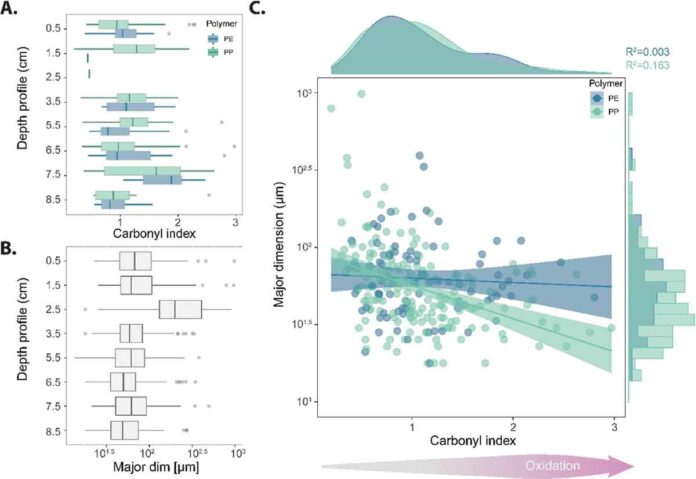The total amount of microplastics deposited on the ocean floor has tripled in the last two decades. It is a trend that corresponds to the type and volume of plastic products consumed by society.
This is the main finding of a study conducted by the Universitat Autonoma de Barcelona’s Institute of Environmental Science and Technology (ICTA-UAB) and Aalborg University’s Department of the Built Environment (AAU-BUILD). This study provides the first high-resolution reconstruction of microplastic pollution from sediments collected in the northwestern Mediterranean Sea.
The seafloor is thought to be the final sink for microplastics floating on the sea surface. But the rate of sequestration and burial of smaller microplastics on the ocean floor is unknown.
This new study has been published in the journal Environmental Science and Technology. The study demonstrates that microplastics are retained unaltered in marine sediments. The microplastic mass sequestered in the seafloor closely resembles global plastic production from 1965 to 2016.
According to the researchers, the sediments analysed have remained undisturbed on the seafloor since they were deposited decades ago. “We’ve been able to see how, especially in the last two decades, the accumulation of polyethylene and polypropylene particles from packaging, bottles, food films, and polyester from synthetic fibres in clothing fabrics, has increased,” says Michael Grelaud, ICTA-UAB researcher.
Polypropylene is the most abundant of these three types of particles. It accounted for 1.5mg per kilogramme of sediment collected. It is followed by polyethylene and polyester. Despite public awareness campaigns emphasising the importance of reducing single-use plastic, data from annual marine sediment records show that we are still a long way from meeting this goal. Policies at the global level in this area could help to alleviate this serious problem.
Smaller microplastics are abundant in the environment. But analytical method constraints have limited robust evidence on the levels of small microplastics in previous studies targeting marine sediment. They were characterised in this study by using cutting-edge imaging to quantify particles as small as 11 m.
The degradation status of the buried particles was investigated. It was discovered that once trapped on the seafloor, they no longer degrade due to a lack of erosion, oxygen, or light. “Fragmentation occurs primarily in beach sediments, on the sea surface, and in the water column. Because degradation is minimal once deposited, plastics from the 1960s remain on the seafloor. These left a trace of human pollution” agrees Patrizia Ziveri, ICREA professor at ICTA-UAB.
The sediment core under investigation was collected in November 2019 aboard the oceanographic vessel Sarmiento de Gamboa during an expedition from Barcelona to the coast of the Ebro Delta in Tarragona, Spain. The research team chose the western Mediterranean Sea as a study area, specifically the Ebro Delta. Because rivers are known to be hotspots for a variety of pollutants, including microplastics. Furthermore, the influx of sediment from the Ebro River results in faster sedimentation rates than in the open ocean.
More information: Laura Simon-Sánchez et al, Can a Sediment Core Reveal the Plastic Age? Microplastic Preservation in a Coastal Sedimentary Record, Environmental Science & Technology (2022). DOI: 10.1021/acs.est.2c04264

